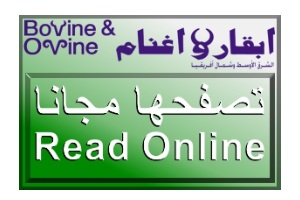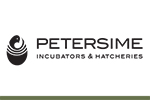 Prepared by: Prof. Dr. Mohamed Ali Maki Jassim Al-Rubaie - Iraq
Prepared by: Prof. Dr. Mohamed Ali Maki Jassim Al-Rubaie - Iraq
Food security is a crucial element in any country's policy, concerning the assurance of adequate food supplies. Conversely, the term "food safety," often applied, refers to keeping undesirable and harmful factors—physical, chemical, and biological—at their lowest levels and as safe as possible. A significant event in recent decades has been the advancement of knowledge regarding food safety and the impact of feed on its security. Acceptable levels of substances and undesirable elements in feed have been identified. Special attention is given to unwanted residues of organic chlorine compounds like dioxins, polychlorinated biphenyls (PCBs), and residues of plant protection products that can easily transfer from feed to animal tissues, potentially contaminating animal-derived food products.
As knowledge evolves, efforts are underway to determine acceptable levels for such unwanted substances, including mycotoxins and toxic alkaloids. Meanwhile, with risk assessment results in mind, detailed regulations are being introduced regarding allowable content of known undesirable and harmful substances (such as heavy metals and toxic elements), including new types of feed.
Feed additives, which have specified maximum levels in compound feed, as well as residues from additives not intended for feed, such as coccidiosis residues in targeted feed, can lead to cross-contamination. Hence, the role of analytical chemicals in controlling food production is invaluable. Through feed, it is possible to adjust animal-derived products toward the desired healthy and beneficial food, complementing beneficial nutrient deficiencies (such as iodine, selenium, and vitamin E) and the correct ratios of these components (such as fatty acid profiles and the correct proportions of essential elements). The beneficial and healthy (functional) diet supports the prevention of many chronic diseases and helps maintain proper bodily functions.
Recent crises in animal production have resulted from feed contamination with unwanted substances, such as dioxins (Belgium 1999), or improper use of certain feeds in animal nutrition; for example, meat and bone meal in ruminant feed led to the Bovine Spongiform Encephalopathy crisis (England 1987), prompting systematic changes in regulations to reduce such risks. Changes were documented in the White Paper on Food Safety, which identified trends in coordinating relevant regulations concerning the safety of animal food products and feed, and their standardization. One of the main lines of action was adopting important feed production areas with harmonized regulations and legal standards in the form of EC regulations, which apply directly in all EU member states without reverting to national regulations.
Analytical chemistry is related to the analysis of compounds and their mixtures. There are three main types of chemical analysis:
- Quantitative Chemical Analysis: Aims to determine the quantitative composition of a substance; for example, the percentage of individual components in a mixture or the concentration of a specific component.
- Qualitative Chemical Analysis: Aims to identify the components of a substance or determine if a specific chemical compound is present in the analyzed material.
- Structural Chemical Analysis: Aims to determine the structure of the compound under study, i.e., the arrangement of atoms within the compound and how these atoms are connected.
It is noteworthy that production heavily relies on the use of safe, high-quality feed in animal nutrition. "Safe" feed is one of the important goals of food law, allowing for high protection levels for human and animal health, and consequently, high-quality animal products. The European Food Safety Authority (EFSA) has established procedures in the field of food and feed safety, including the creation of early warning systems for hazards in the food chain, such as the Rapid Alert System for Food and Feed. The aforementioned chemical compounds are just a small part of the legally required analyses for monitoring.
These analytical methods have been successfully used in fertilizer research, supporting plant production for animal feed. Unfortunately, new contaminants observed at very low concentration levels require specialized tools either online or offline. Transparent use of compliant techniques as automated methods in such determinations is recommended. Controlling these requires using a wide range of analytical methods, both classical (such as titration methods, UV-visible spectroscopy) and modern (such as ICP-MS, LC-MS). Therefore, it is essential to equip research laboratories with equipment that allows for accurate detection and limits of these contaminants.
Applying these analytical methods necessitates verifying the accuracy of the analytical procedures used to ensure that the results obtained from analytical chemistry are reliable. Verification should include determining some information that characterizes the analytical method, including:
- Selectivity / Specificity.
- Limit of Detection (LOD).
- Limit of Quantification (LOQ).
- Working Range.
- Linearity.
- Sensitivity.
- Precision.
- Repeatability.
- Recovery, allowing the determination of the uncertainty in the obtained results.
For official feed monitoring, sampling and labeling regulations are organized, including materials containing genetically modified organisms, feed additives, unwanted substances, and pesticides. Samples taken are representative of the batches inspected, thus closing the door to legal challenges to decisions made based on the testing system, which was previously the case in disputes where the party denying test results justified it with dubious excuses or incorrect sampling methodology. Sampling staff must obtain authorization from the state for this purpose. On the other hand, sample preparation for analysis, general reagent and equipment requirements, analytical procedures, and result expression must follow guidelines. Sampling for official feed monitoring must be performed by personnel authorized for this purpose by member states.
The sampling phase for testing is one of the most critical elements in ensuring high reliability and objectivity of laboratory test results. This element is crucial when assessing the compliance of batches with requirements. Proper execution of this process affects achieving the reliability and credibility needed for results and making appropriate decisions regarding whether a specific batch of feed meets the requirements.
Therefore, this phase is subject to feed and food law regulations, an important area for standardization related to quality management systems for laboratory testing. In official food and feed monitoring, there are several regulations governing general and more specific sampling methodologies. However, some research areas lack specific requirements or have recently been specified, such as microbiological testing of feed. In such cases, reliance on good sampling practices based on previously applied feed standards or standards set by the Codex Alimentarius Commission may be necessary. This is especially important in trade with third countries when disputes arise over challenging results, requiring a common reference point.
These activities are complemented by chemical measurement, allowing for the classification, description, and evaluation of the obtained results. For example, evaluating trace amounts of major and minor elements in organic dairy herds and different types of feed.
Examples of Analytical Chemistry Applications in Feed/Food Analysis:
Physical-Chemical Analysis: Physical-chemical analysis complements knowledge obtained from microbiological determinations and sensory tests. It provides necessary information about the product’s composition (proteins, fats, moisture, fibers, salts, or ash), the presence of trace and major elements, vitamins, and impurities (such as heavy metals, pesticide residues, polycyclic aromatic hydrocarbons, or dioxins). Additionally, feed additives.
Contaminant and Residue Testing: The goal of the EU feed safety policy is to protect consumers while ensuring the smooth operation of the market. Every product available in the market must meet relevant specifications, both in terms of basic standards and the presence of harmful substances that could exceed legally defined limits. Due to the progressive chemistry of agriculture and other food production branches, it is necessary to properly control residues of contaminants in food products and other animal feed products. Major contaminants of food safety concern include antibiotic residues, chemotherapy agents, insecticides, dioxins and PCBs, mycotoxin levels, polycyclic aromatic hydrocarbons, acrylamide, 3-monochloropropanediol, melamine, and heavy metals.
Veterinary Drug Residues:
- Antibiotics and chemotherapy agents are commonly used to treat various diseases in humans and animals. The detection and application of these substances are significant achievements in modern medicine. However, when present in muscle tissues, animal residues, or animal products (such as milk, eggs, and honey), they may pose potential health risks to consumers. Such cases often arise from failure to adhere to withdrawal times, inappropriate dosages of veterinary medical products, or unintentional use of non-recommended drugs for specific animal types.
- To protect consumer health in the EU, many restrictions and regulations have been introduced regarding the use of antibiotics and chemotherapy agents in food-producing animals. Monitoring veterinary drug residues is complex due to different groups of these agents (associated with variations in individual compound structures) and significant metabolic changes affecting residue levels in the final product. Both microbiological testing methods, which allow relatively rapid batch assessment, and modern analytical techniques combining chromatography and mass spectrometry are used in veterinary residue studies.
Pesticide Residues: The use of pesticides in agriculture has significantly increased crop yields and reduced disease incidence among farm animals, thus enhancing food sector production. However, the presence of pesticide residues in final products is highly undesirable due to their proven negative effects on humans (teratogenic, mutagenic, and carcinogenic effects). Therefore, continuous monitoring of pesticide residues and their bioactive, photochemical, and chemical products in food is crucial. To analyze pesticide residues in food matrices, appropriate techniques for isolation and enrichment of matrix analyses must be used to reliably and accurately determine them. The diversity of matrices and compounds classified as pesticides makes it challenging to find a universal solution.
Role of Analytical Chemistry: The application of methodologies for determining all pesticides in all possible food products is essential. Thus, a balance must be found between the number of determined compounds, their detection levels, time and labor expenditure, and the cost and complexity of the required analytical equipment for specific determinations (matrix).
Dioxins and Polychlorinated Biphenyls (PCBs): Polychlorinated dibenzo-p-dioxins (PCDDs) and polychlorinated dibenzofurans (PCDFs), collectively known as dioxins, are a group of over 200 chemical compounds that share a common chemical structure. Many dioxins are highly toxic, with severe effects on human and animal health (cancer, reproductive disorders, and other serious health problems). Even minute amounts of dioxins can be harmful. This issue has been known since the 1960s, and significant efforts have been made to reduce emissions of these substances from industrial sources. Similarly, polychlorinated biphenyls (PCBs) are a group of toxic chemicals used in various applications (such as coolants and insulating fluids in electrical equipment). The EU legislation sets strict limits on dioxin and PCB content in animal feed and animal products. Methods for detecting dioxins and PCBs in animal products often use high-resolution gas chromatography coupled with high-resolution mass spectrometry.
Mycotoxins: Mycotoxins are toxic compounds produced by fungi, often found in cereals, feeds, and food. They can cause acute or chronic toxicity in both animals and humans, with health impacts including cancer and kidney damage. Detecting mycotoxins in animal feed and food products is essential, often performed using various methods such as high-performance liquid chromatography (HPLC) and enzyme-linked immunosorbent assay (ELISA). Techniques for detecting mycotoxins are widely used due to their significant impact on food safety and human health.
Heavy Metals: Heavy metals are often present in the environment and can accumulate in animal tissues and feed, potentially leading to health risks for consumers. Detection of heavy metals in feed and food products is performed using techniques such as inductively coupled plasma mass spectrometry (ICP-MS) and atomic absorption spectroscopy (AAS). Regular monitoring ensures that heavy metal levels do not exceed legally established limits, protecting consumer health.
Conclusion: The role of analytical chemistry in monitoring feed safety and quality is indispensable. Analytical techniques are essential for detecting contaminants, residues, and toxic substances in feed and food products, ensuring compliance with safety regulations, and protecting public health. Advances in analytical methods continue to enhance the precision and reliability of these assessments, contributing to the overall safety of the food supply chain.


















